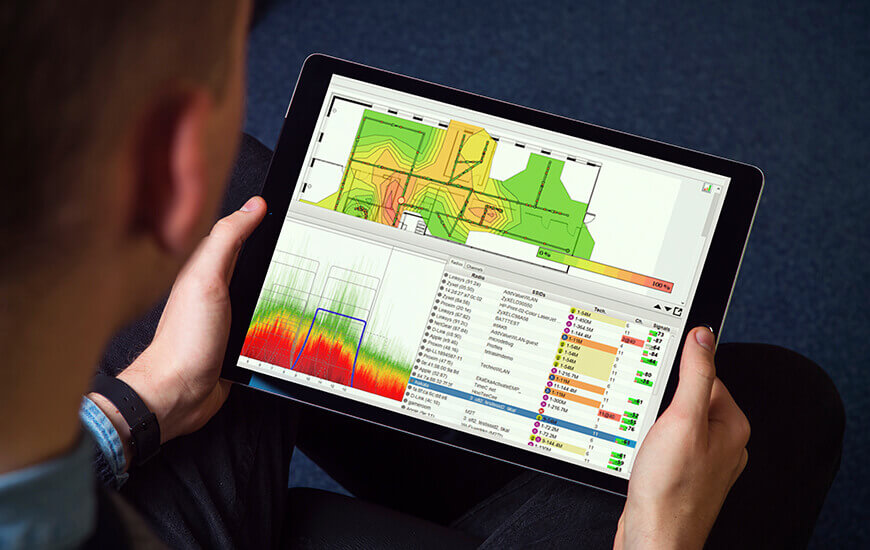
Wireless Site Survey
A wireless site survey, sometimes called an RF (Radio Frequency) site survey or wireless survey, is the process of planning and designing a wireless network, to provide a wireless solution that will deliver the required wireless coverage, data rates, network capacity, roaming capability and quality of service (QoS).This requires analysis of building floor plans, inspection of the facility, and use of site survey tools. Interviews with IT management and the end users of the wireless network are also important to determine the design parameters for the wireless network. The survey usually involves a site visit to test for RF interference, and to identify optimum installation locations for access points.
Wireless site surveys are typically conducted using computer software that collects and analyses WLAN metrics and/or RF spectrum characteristics. Before a survey, a floor plan or site map is imported into a site survey application and calibrated to set scale. During a survey, a surveyor walks the facility with a portable computer that continuously records the data.
The surveyor either marks the current position on the floor plan manually, by clicking on the floor plan, or uses a GPS receiver that automatically marks the current position if the survey is conducted outdoors. After a survey, data analysis is performed, and survey results are documented in site survey reports generated by the application.
Wireless site survey is an essential process for ensuring optimal performance and coverage of wireless networks. It involves the use of specialized tools and techniques to assess the signal strength, interference, and other factors that can affect the performance of wireless networks.
Wireless site survey helps identify and mitigate sources of interference that can affect the performance of wireless networks. Interference can come from various sources, including other wireless networks, physical obstacles, and electronic devices. By identifying these sources of interference, wireless site survey can help organizations optimize their wireless network performance and minimize downtime.
Ensuring successful and accurate data gathering during Wi-Fi site surveys is one of the cornerstones of Ekahau Survey. With Survey 2.0, you can access all the necessary details of your survey paths directly on your mobile devices. The added level of detail lets you validate that you’ve collected what you need the first time without having to waste unnecessary time redoing surveys.
Types of Wireless Site Survey
There are three main types of wireless site surveys: passive, active, and predictive.
During a passive survey, a site survey application passively listens to WLAN traffic to detect active access points, measure signal strength and noise level. However, the wireless adapter being used for a survey is not associated to any WLANs. For system design purposes, one or more temporary access points are deployed to identify and qualify access point locations. This used to be the most common method of pre-deployment wifi survey.
During an active survey, the wireless adapter is associated with one or several access points to measure round-trip time, throughput rates, packet loss, and retransmissions. Active surveys are used to troubleshoot wi-fi networks or to verify performance post-deployment.
During a predictive survey, a model of the RF environment is created using simulation tools. It is essential that the correct information on the environment is entered into the RF modeling tool, including location and RF characteristics of barriers like walls or large objects. Therefore, temporary access points or signal sources can be used to gather information on propagation in the environment.
When conducting a wireless site survey, consider the following:
- Understand the wireless requirements
- Obtain a facility diagram
- Visually inspect the facility
- Assess existing network infrastructure
- Identify coverage areas
- Determine preliminary access point locations
- Verify access point locations
- Document findings
Ekahau Site Survey (ESS): This is Ekahau’s flagship product and the most popular Wi-Fi design and survey tool. It enables users to plan, design, and validate Wi-Fi networks, as well as troubleshoot connectivity issues. ESS provides advanced features like real-time location tracking and predictive modeling.